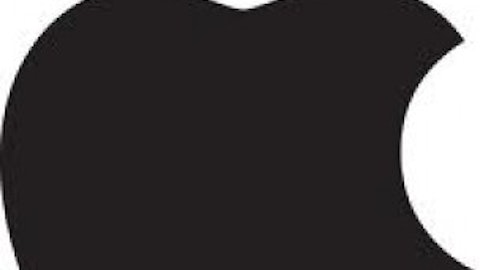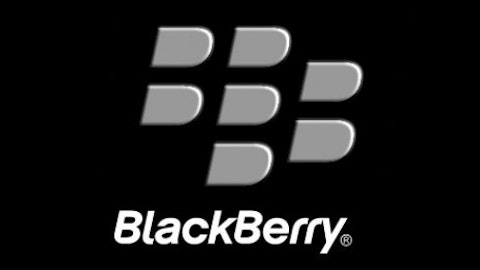Nokia Corporation (ADR) (NYSE:NOK), a fallen giant (mainly due to the birth of new-age technology), remains one of the biggest mobile phone companies. Since the invention of the first smartphone just over five years ago, Nokia has struggled to keep up with the competition in the new market segment. Apple Inc. (NASDAQ:AAPL) and Samsung have taken a huge chunk of the market, while Research In Motion Ltd (NASDAQ:BBRY) and HTC continue to battle Nokia for the third spot. Nokia’s partnership with Microsoft Corporation (NASDAQ:MSFT) has not helped, with Windows Phone holding barely 3% of the smartphone platforms market share.
Top 5 smartphone operating systems, shipments, and market share, 1Q13 (units in millions)
| Operating System | 1Q13 ShipmentVolume | 1Q13 Market Share | 1Q12 Shipment Volume | 1Q12 Market Share | Year-Over-Year-Change |
| Android | 162.1 | 75% | 90.3 | 59.1% | 79.5% |
| iOS | 37.4 | 17.3% | 35.1 | 23% | 6.6% |
| Windows Phone | 7.0 | 3.2% | 3.0 | 2% | 133.3% |
| BlackBerry | 6.3 | 2.9% | 9.7 | 6.4% | -35.1% |
| Linux | 2.1 | 1.0% | 3.6 | 2.4% | -41.7% |
| Symbian | 1.2 | 0.6% | 10.4 | 6.8% | -88.5% |
| Others | 0.1 | 0.0% | 0.6 | 0.4% | -83.3% |
| Total | 216.2 | 100% | 152.7 | 100% | 41.6% |
Data Source: IDC Worldwide Quarterly Mobile Phone Tracker, May 2013
The good news for Nokia Corporation (ADR) (NYSE:NOK), though, is the fact that, despite the slow progress of the Windows Phone platform, there is at least some growth, which indicates increasing popularity. But, it will take a lot of time before Microsoft’s platform can stand a chance to mount any significant challenge to the two leaders, Google Inc (NASDAQ:GOOG)’s Android and Apple’s iOS. Additionally, Samsung is also plotting to adopt it’s own operating system, Tizen, while Firefox has also made progress in coming up with a free proprietary platform. This adds to the challenge faced by Nokia in rebuilding its empire.
Nokia Corporation (ADR) (NYSE:NOK) recently refreshed its line of Lumia phones, launching the Lumia 928 this month, and also announced that the Lumia 925 will be launched globally within a few months. The Finnish giant is looking to broaden its market share in the U.S., which is dominated by the iPhone and Samsung Galaxy phones. BlackBerry 10 has also taken a considerable chunk of the U.S. market since launching in January, but has thus far disappointed compared to initial targets. BlackBerry shipped 6.3 million units in the first quarter of 2013, following its early romp in the U.K. and Canada. Windows Phone shipments stood at seven million, representing a 133.3% increase year-over-year. BlackBerry’s shipments declined 35.1% from last year. It was the only decline among the top four platforms in the smartphone industry. Google’s Android, on the other hand, shipped 162 million units, largely attributed to Samsung Galaxy phones and HTC shipments, while Apple’s iOS sold 37.4 million units.
The most interesting statistics illustrate that, apart from Android, which increased its market share from 59.1% to 75% year-over-year, Windows Phone was the only other platform to register growth in market share, increasing from 2% to 3.2%. Both iOS and BlackBerry registered declines, along with the rest of the players. In terms of growth rates, Windows Phone registered the highest figure with 60% growth rate, while Android was up 26.9%. If Windows and Nokia Corporation (ADR) (NYSE:NOK) can maintain that growth rate, their market share could be in double digits with the next three years.
Patent wars and distribution channels
The Finnish company has been filing lawsuits against rivals at an alarming rate. Only Apple can can rival Nokia in terms of the number and frequency in filing lawsuits against rivals. While Apple’s war has been against Samsung, Nokia has waged battle with everyone. After successfully managing to secure a deal with BlackBerry, the Finland-based mobile phone maker is now up against HTC. Some of Nokia Corporation (ADR) (NYSE:NOK)’s benefits emanate from its strength in registered patents, along with a well-set distribution network.
Patents guarantee Nokia some consistent revenue, which does not depend on its own shipments, while the distribution channels play a major role in cutting costs associated with sales. These are some of the factors that maintain Nokia’s valuation in the eyes of investors. Without these two factors, Nokia would be reduced to relying on sales from its feature phones as a complement to its smartphone struggles. As long as the company’s distribution channels remain intact, along with a strong set of patents, the company holds valuable assets for a competitive edge. It will now need to work on increasing smartphone sales as Microsoft’s Windows Phone gains popularity.
Nokia’s way back to being among the best is an impossible mission
Nokia’s five-year average dividend yield stands at 5.6%. This would have been quite impressive if the company had been paying dividends over the recent past. Nokia’s loss-making campaign does not allow for a forward annual dividend yield. Nokia may find it’s way back to profitability in the future, but seems to be certainly dead and buried in the smartphone’s competitive arena.The company’s most recent quarterly revenue fell by 20.4%, while both profit and operating margins remain negative. Nonetheless, Nokia’s trailing 12-month gross profit stands at $11.6 billion, and the company has a total cash balance of $13.5 billion. This should help the company in servicing its debt of $7.28 billion, while covering other costs associated with the turnaround campaign. With a current ratio of 1.27, this is indicative that the company’s current assets are well-positioned to take care of short term obligations.
Contrary to Nokia, Apple’s trailing 12-month operating margin stands at a massive 30.92%, while the profit margin is just a few percentage points below, at 23.46%. The iPhone-maker’s recent quarterly revenue grew by 11.3%, but earnings were down 17.9% year-over-year following a squeeze in gross margins. With over $140 billion worth of cash, this technology giant remains one of the most secure stocks to hold, despite its fall from grace.
Google, on the other hand, grew its earnings by 15.8%, while revenues were up 31.2% year-over-year. The search engine giant’s operating margins are equally impressive, but well below Apple’s at 25.3%, while the profit margin stands at 20.92%. Google is currently trading north of $850, and seems likely to breach the $1,000 mark by the end of this year, according to analysts. However, the high price might, yet again, prove an obstacle, as margins remain checked due to traffic acquisition costs. Nonetheless, the company will continue to dominate the smartphone market, unless something out of the ordinary happens.
The bottom line
Nokia’s 20.4% decline in revenue for the most recent quarter (Mar 31) means that, despite the progress made by Windows Phone, the gains were not significant enough to affect Nokia’s revenue. This is mainly because Nokia’s own Symbian phones fell from 10.4 million to just 1.2 million in shipments from Q1 last year. This is a massive decline of 9.2 million compared to Windows Phone’s increase in shipments of four million. Even if all seven million Windows Phones shipped were Nokia smartphones, there would still be a 3.4 million deficit, or some 32.7% decline. Therefore, Nokia has a tough task in increasing Windows Phone sales by at least 100% if its is to begin registering revenue growth rates before even thinking of profitability.
The Lumia phone maker holds a substantive amount of cash, which can see it through the turnaround process that began about two years ago. However, the decline in revenue is depicting some stagnation, which needs to be overcome in order to capitalize on the Windows Phone progress. Even though the company’s shares are on a rebound after falling from $4.70 on January 11, the disappointing results are likely to ruin this growth and, consequently, the resurrection. This mission is ever becoming impossible.
Nicholas Kitonyi has no position in any stocks mentioned. The Motley Fool recommends Apple. The Motley Fool owns shares of Apple and Microsoft.
The article Nokia Resurrection: Mission Impossible? originally appeared on Fool.com.
Copyright © 1995 – 2013 The Motley Fool, LLC. All rights reserved. The Motley Fool has a disclosure policy.






